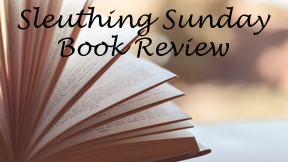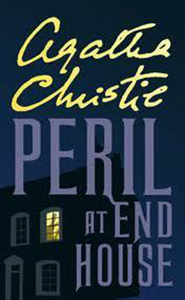“Peril at End House” (1932) comes relatively early in Agatha Christie’s career, but already it feels like an effortlessly crafted Poirot mystery, featuring all the comfortingly familiar elements. Poirot is retired and vacationing in the mild climate of St. Loo in southern England when a crime just happens to occur nearby. A large old house takes center stage. Hastings is on hand to narrate and (foolishly) doubt Poirot.
The case he can’t solve?
Well, maybe not so foolishly this time. “Peril” probably features some dust jackets that proclaim this might be the one case Poirot can’t solve. The detective himself, while as boastful as always in the opening chapters, starts to question his own prowess when he’s unable to gather key pieces of missing information.
Indeed, the period between Poirot figuring it out in his brain (but not telling Hastings, or us) and the reveal of the solution is shorter than usual here.

“Peril at End House” (1932)
Author: Agatha Christie
Genre: Mystery
Series: Hercule Poirot No. 7
Setting: Cornwall, England, 1932
The missing information so bothers the short Belgian that he makes himself central to the action in the final act, devising a scheme wherein the answers have to reveal themselves.
While she does hit all the familiar beats, Christie is not one to mindlessly phone in a novel, and “Peril” stands out in a couple ways. For one, the intended murder victim – a young lady with the unlikely name of Nick Buckley – has escaped several attempts on her life, such as a heavy falling portrait at End House, a runaway boulder on the cliffside beach, and even a flying bullet on the patio of the hotel where Poirot and Hastings are staying.
Working ahead
So Poirot is seeking the murderer before he or she commits the murder. That explains why he gets more emotionally worked up than the norm (tossing out even more French exclamations than usual), and blames himself when a killing finally does occur. In a more typical case, he would get involved after the murder, when nothing can be done and when there’s less time pressure.
“Peril” is, as you’d expect, loaded with characters; Poirot’s suspect list of people in Nick’s sphere ranges from entry A through J. Inevitably, not everyone is fully fleshed out, and a lot of small events pile up, but I didn’t find the book confusing.
Thematically, one distinct element is drug use. Nick’s best friend, Frederica, is to some degree an addict; depending on who you believe, she’s recovering or still hooked on cocaine. Regardless, the author – through Poirot and Hastings — shows little sympathy for Frederica, but also not much knowledge about drugs.
Her descriptions of Frederica’s drug-influenced behavior are vague or flat. Partially this is for the sake of the mystery. Still, Christie comes off as an armchair drug warrior who would likely see a governmental drug crackdown as something logical and just. Still, it’s a minor part of the novel, and I mainly bring it up because “Peril” is fairly short on unusual talking points.

The final act (Spoilers)
The best part comes at the end, so I have to put up a SPOILER WARNING here.
Since Christie has pulled similar tricks before, and since I’ve always been pleasantly surprised by the twist, a case could be made that I’m a sucker. Regardless, the author earns the twist wherein Nick herself – not included in the A-to-J list of Poirot’s suspects — is the villain of the piece.
“Peril” is the latest example of something I’ve noticed in a lot of these early Christies: the fact that identities can be switched in such a way as to fool the authorities, both on the spot and permanently. I’m no defender of the “Your papers, please” modern age, but if Christie was writing a century later, she’d have to find workarounds for switched-identity plots such as this one, where Nick takes advantage of having the same given name as her cousin Maggie.
Another of-the-time element is that all correspondence, from letters to wills, is on paper. Digital files and electronic trails aren’t even found in science fiction novels yet, let alone reality.
Of course, a core appeal of reading Christie today is the journey back in time. “Peril at End House” is not an elite novel in its sense of place or its supporting cast or its sociopolitical observations. But it is a smartly plotted 1930s Poirot-and-Hastings jaunt, and it’s hard to complain about that.
Every week, Sleuthing Sunday reviews an Agatha Christie book or adaptation. Click here to visit our Agatha Christie Zone.

